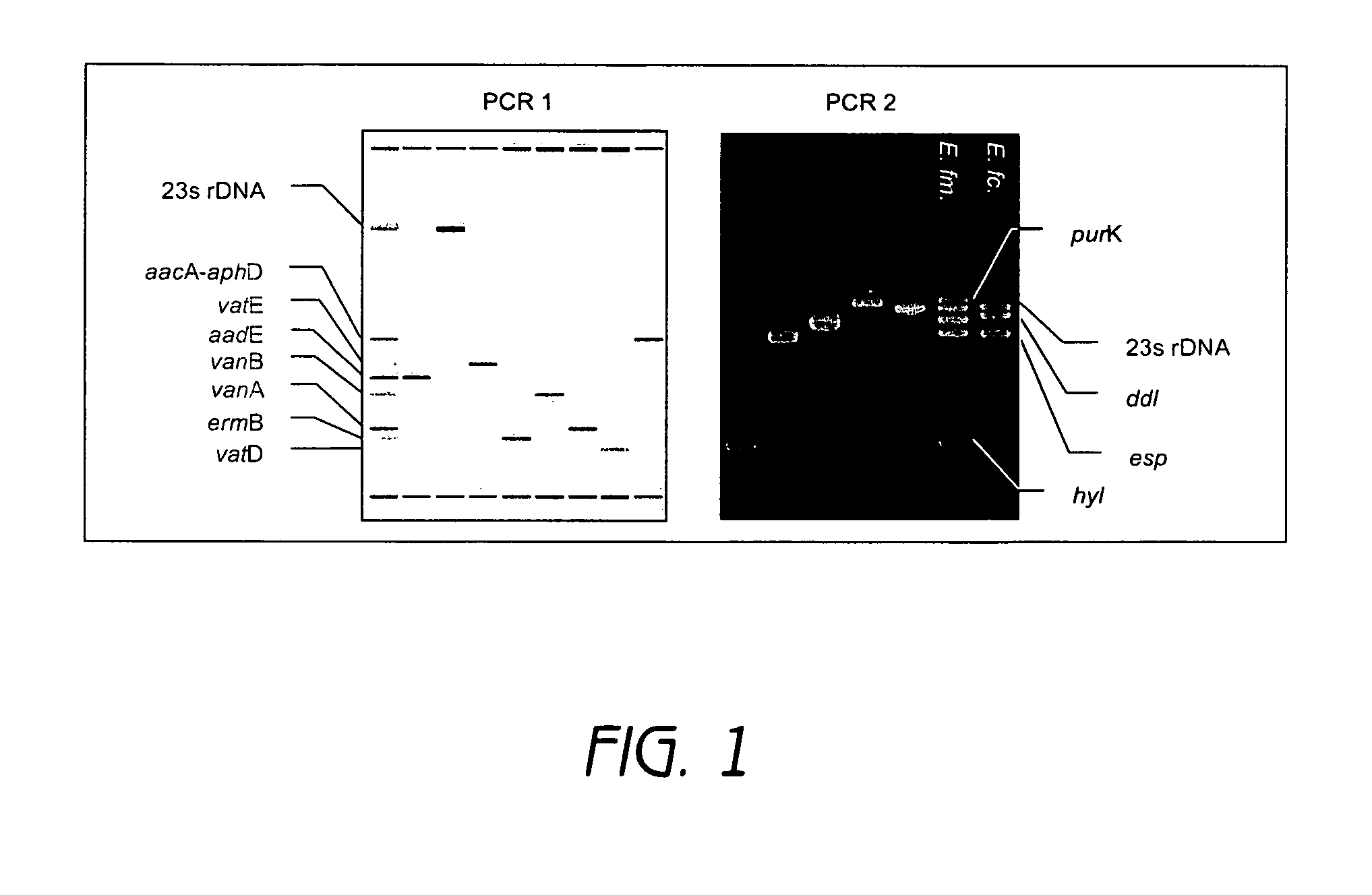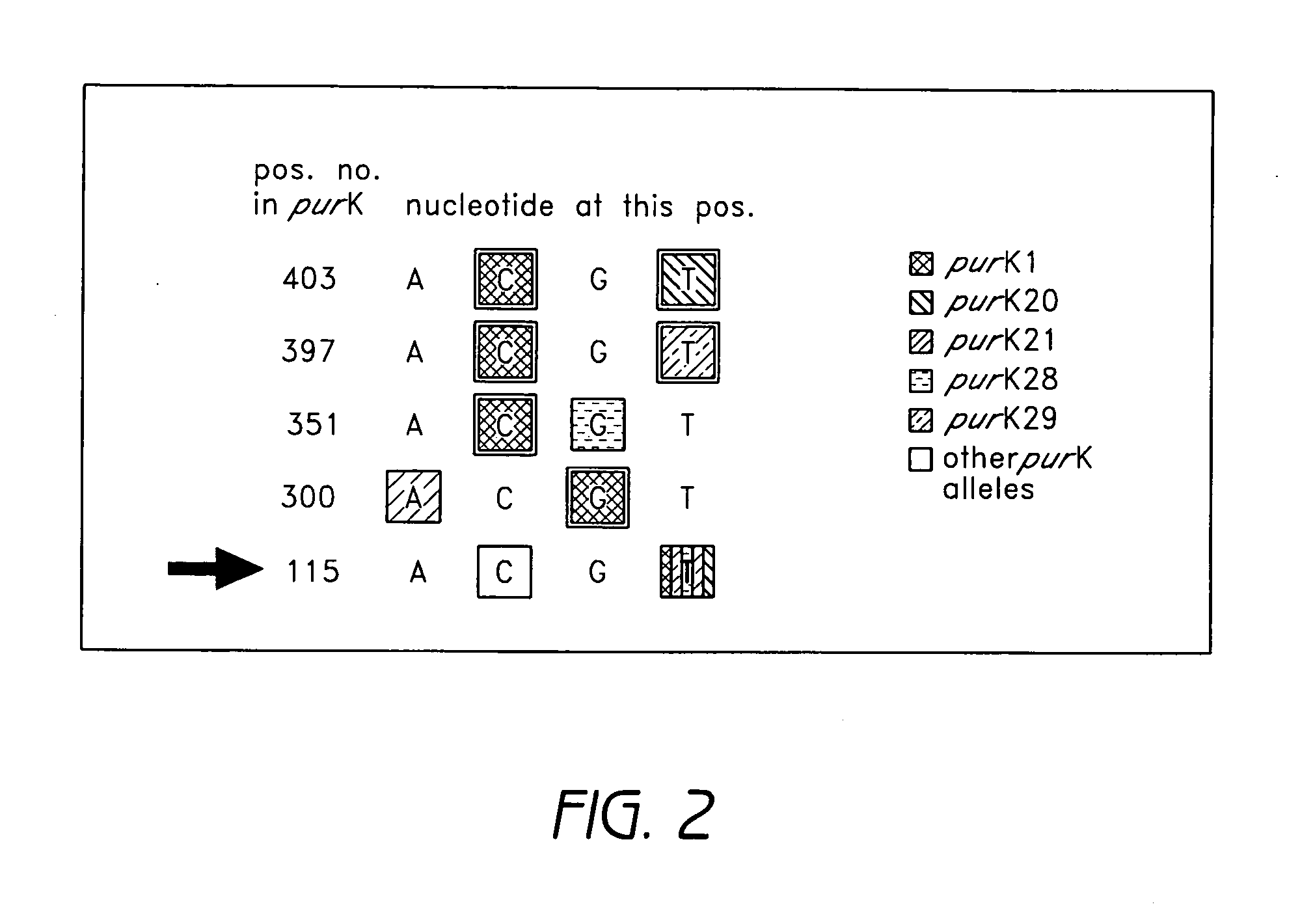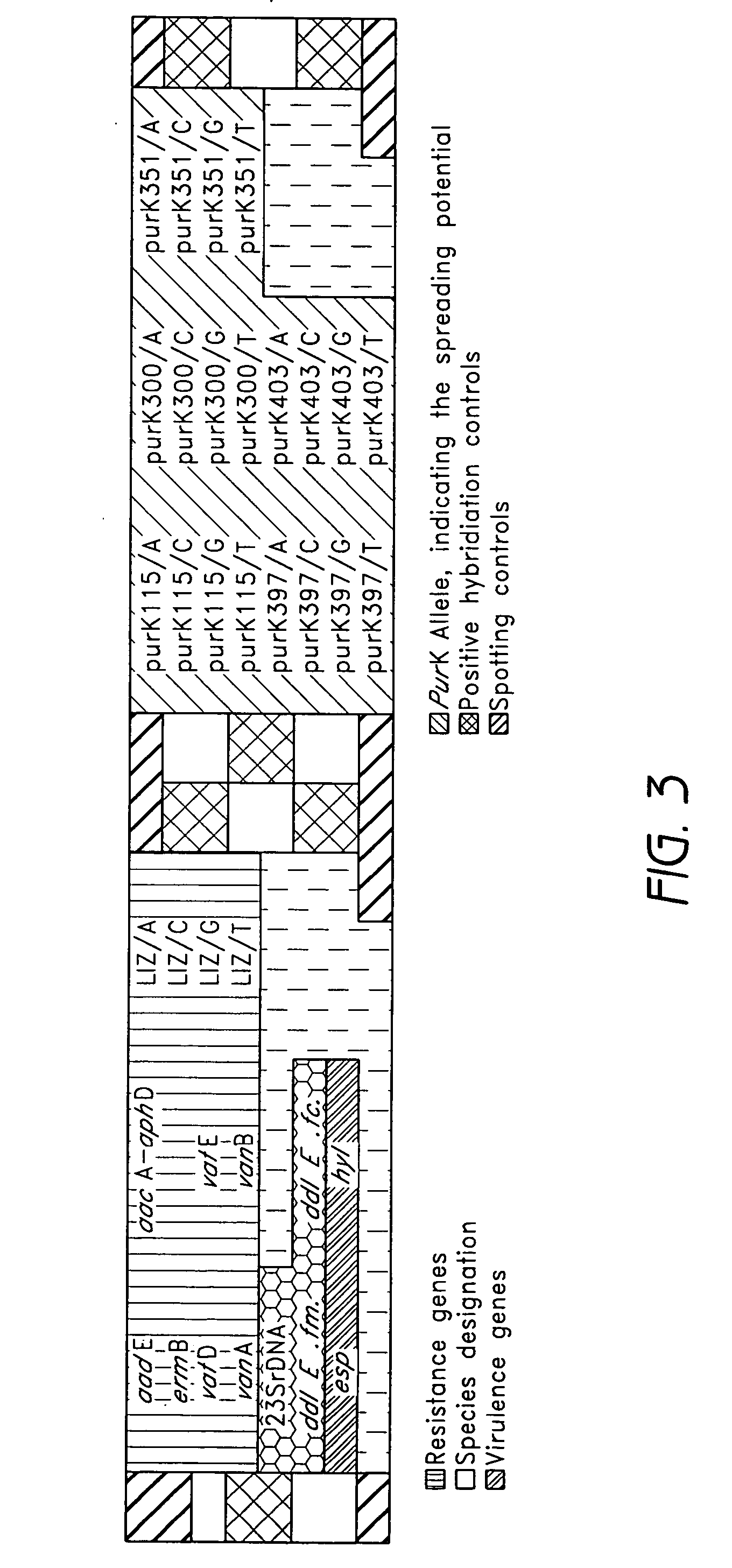Detection of presence and antibiotic susceptibility of enterococci
a technology of enterococci and detection method, which is applied in the field of detection of enterococci, can solve the problems of wrong diagnosis and delayed treatment, negative blood culture, damage to enterococci, etc., and achieves the effects of accurate and inexpensive identification, rapid and accurate detection, and easy expansion
- Summary
- Abstract
- Description
- Claims
- Application Information
AI Technical Summary
Benefits of technology
Problems solved by technology
Method used
Image
Examples
examples
Bacterial Strains and DMA Extraction
[0074] Enterococcal isolates investigated in this study originated from material sent to our reference laboratory. To evaluate oligonucleotide capture probes for the detection of various resistance and virulence genes, the following, previously characterized strains were used: E. faecium UW 1965 (reference strain for aacE, ermB, vafE), E. faecalis UW700 (reference strain for aacA-aphD, vanB), E. faecium UW1342 (reference strain for vanA, vatD), E. faecium UW 5248 (reference strain for purK20, esp, hyl), E. faecalis UW 5245 (reference strain for esp), E. faecium UW5256 (reference strain for purK1, esp, hyl). All strains were grown on sheep blood agar. Genomic DNA was extracted from 2 ml overnight culture with the DNeasy Tissue Kit (Qiagen, Hilden, Germany) following the manufacturer's instructions.
Antimicrobial Susceptibility Testing
[0075] All isolates were tested with the broth microdilution assay as described in the NCCLS standard (Grimm, V ...
PUM
| Property | Measurement | Unit |
|---|---|---|
| area | aaaaa | aaaaa |
| specific wavelength | aaaaa | aaaaa |
| density | aaaaa | aaaaa |
Abstract
Description
Claims
Application Information
 Login to View More
Login to View More - R&D
- Intellectual Property
- Life Sciences
- Materials
- Tech Scout
- Unparalleled Data Quality
- Higher Quality Content
- 60% Fewer Hallucinations
Browse by: Latest US Patents, China's latest patents, Technical Efficacy Thesaurus, Application Domain, Technology Topic, Popular Technical Reports.
© 2025 PatSnap. All rights reserved.Legal|Privacy policy|Modern Slavery Act Transparency Statement|Sitemap|About US| Contact US: help@patsnap.com



